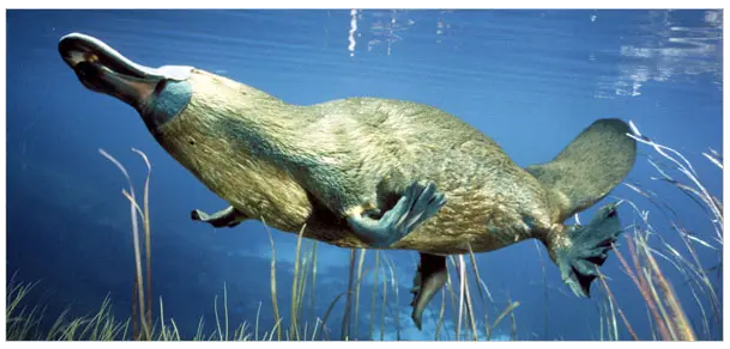- Courses
- GS Full Course 1 Year
- GS Full Course 2 Year
- GS Full Course 3 Year
- GS Full Course Till Selection
- Online Program
- GS Recorded Course
- NCERT (Recorded 500+ Hours)
- Polity Recorded Course
- Geography Recorded Course
- Economy Recorded Course
- AMAC Recorded Course
- Modern India, Post Independence & World History
- Environment Recoded Course
- Governance Recoded Course
- Science & Tech. Recoded Course
- International Relations and Internal Security Recorded Course
- Disaster Management Module Course
- Ethics Recoded Course
- Essay Recoded Course
- Current Affairs Recoded Course
- CSAT
- 5 LAYERED ARJUNA Mentorship
- Public Administration Optional
- ABOUT US
- OUR TOPPERS
- TEST SERIES
- FREE STUDY MATERIAL
- VIDEOS
- CONTACT US
PLATYPUS
PLATYPUS
06-10-2023

Context
- Research indicates a concerning situation involving water-dwelling Platypuses (Ornithorhynchus anatinus) in eastern Australia following the 2019-20 Black Summer bushfires.
Key Points
- Platypus populations are decreasing in the post-fire environment, despite their aquatic habitat.
- This study examines the conservation implications of dwindling platypus populations in post-fire environments, using environmental DNA (eDNA) to detect their presence.
Platypuses
- About: Platypuses are the living monotreme species.
- Monotremes are primitive mammals known for their egg-laying reproduction, a trait shared with their distant ancestors.
- This species is one of the five mammals that lays eggs, the other four being echidnas.
- Key Features: They are highly adaptable and can be found in various freshwater environments such as rivers, streams, and lakes.
- The platypus's bill, a remarkable feature, is soft and sensitive, containing electroreceptors that detect electrical signals from prey's muscles and nerves in the water.
- They are renowned for their burrowing behavior.
- They are carnivorous and primarily feed on aquatic invertebrates.
- Habitat: Fossil records in Australia reveal Platypus ancestors, believed to have originated and evolved in the ancient supercontinent of Gondwana, making them one of the oldest mammal lineages.
- They are found in tropical rainforest lowlands, northern Queensland plateaus, and cold, high-altitude regions like Tasmania and the Australian Alps.
-
Conservation Status:
- IUCN Red List: Near Threatened.
The International Union for Conservation of Nature (IUCN) is the global authority on the status and measures needed to protect the natural world.



